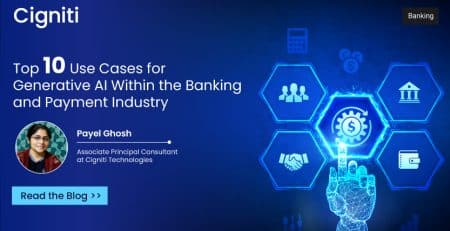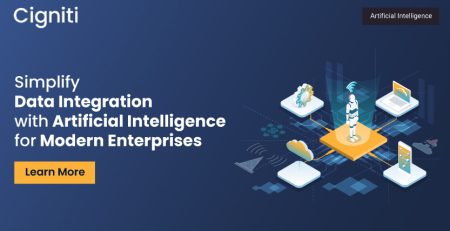Achieve a Faster ROI with Full-Featured AI-Driven Robotic Process Automation
The concept of automating business processes isn’t new; what is new is the variety of ways that breakthrough automation technologies are being implemented, as well as the types of real-world benefits that enterprises throughout the world are achieving.
By automating regular or tedious operations, automation frees up a staff to conduct more strategic, higher-value work, such as bringing innovative products to market. It also improves the client experience by reducing response time and increasing accuracy. Businesses are recognizing the advantages of automation by reducing inefficiencies and human errors, saving costs, and enhancing data quality.
Enterprises are leveraging Artificial Intelligence (AI) insights to automate numerous repetitive, previously manual back-office operations through Robotic Process Automation (RPA). Line-of-business users are tackling growing business difficulties in real time with RPA solutions, including those that offer low-code or no-code authoring tools.
Although both conventional automation and RPA solutions provide demonstrable business benefits, RPA adopters claim that their solutions provide considerably more value.
RPA is a technology that is undergoing a renaissance across all industries, transforming the way businesses operate and reducing operating expenses significantly. RPA technology has been shown to increase process completion efficiency across a wide range of corporate departments at a cheap cost.
RPA applications can be found in a variety of industries and can be tailored to give value in a variety of settings. RPA may be used to automate a wide range of tasks, including customer management, payroll processing, compliance checks, and staff onboarding and offboarding.
RPA robots are available in three versions: Unattended RPA, Attended RPA, and Hybrid RPA, to address the various needs based on the type of data and the method in which processes are executed. The sort of robot required is determined by the business requirements and the environment in which the solution will be created. Different conditions necessitate different responses.
Without human involvement, unattended robots function on separate virtual workstations.
Typically, RPA scenarios that require attended RPA robots rely on data that must be validated by humans, are non-schedulable jobs, and directly help humans in their tasks. Some duties are performed by the robot, and the person will interfere when necessary.
RPA robots and human employees work together in a hybrid RPA environment. Hybrid RPA scenarios that include both virtual robots and human employees can operate more efficiently by deploying each actor at the most efficient time.
A full-featured AI-driven RPA can help achieve faster ROI in various industries such as healthcare, supply chain, finance, and IT.
The healthcare business has a lot of potential to improve patient services and back-office efficiency by deploying RPA. Technological advancements have benefited the healthcare industry over the years, and RPA provides another potential to improve business processes and patient care.
Through RPA and AI technologies such as conversational AI and natural language processing, the benefits of robotic process automation can provide a new level of efficiency in corporate activities like data processing, health interoperability, and cloud computing, while also improving patient care.
With most healthcare professionals recognizing automation as a top goal for their businesses, every healthcare institution can benefit from robotic process automation to boost operational efficiency.
Enterprises spend a lot of time understanding consumer markets and satisfying changing demands in supply chain management. Combining RPA and AI technologies can increase the accuracy of information such as consumer market estimates while also speeding up company procedures. This enables providers to meet demand by providing human personnel with access to the data they require.
Inventory management and product quality assurance are examples of supply chain management use cases, as are logistics administration and customer support. Taking inventory management into account, RPA solutions allow retail firms to prepare item stocks based on consumer estimates in a rapid and simple manner.
The bot can make proposals for purchase orders in the defined business period by adopting automation technologies, significantly speeding up the process and increasing resource efficiency.
Regulatory compliance and risk reduction are significant hitches in the accounting and finance industry. In this new digital era, reliance on enterprise resource planning (ERP) software and legacy applications is being replaced by more efficient technologies like RPA.
RPA helps to revolutionize many corporate operations by lowering costs, enhancing risk management, and allowing Chief Financial Officers and their teams to focus on higher-value tasks.
The introduction of RPA with optical/intelligent character recognition (OCR/ICR) into this industry benefits areas such as accounts receivable, general accounting, and tax regulatory compliance. Before embarking on the digital transformation road with RPA, introducing RPA into simple operations like invoice data entry can give an excellent proof of concept.
Once the advantages of RPA are discovered, including AI components increases the capabilities and efficiency of RPA systems across all accounting and finance business processes.
Every day, countless transactional operations take place within IT departments across all businesses. Due to the high volume of requests, many IT teams are unable to respond to them, resulting in backed-up departments throughout a business.
RPA can alleviate these challenges while also assisting in the standardization of operations across an IT department. By automating processes and regulating workflows, IT personnel may accomplish their work at a much faster rate while delivering greater functionality.
Conclusion
In today’s digital transformation environment, more firms are turning to automation and AI to optimize their company processes. RPA is the use of technology to automate business processes that are rule-based, well-organized, and repeatable.
RPA’s numerous technologies can be used by businesses to interface with other digital systems, collect data, retrieve information, conduct transactions, and more.
The creation of bots lies at the heart of RPA implementation.
At Cigniti, we design and construct bots for process automation using AI, ML, and cognitive services based on the shortlisted candidates for automation. Following that, our RPA specialists orchestrate workflows, governance, and rollout validation. We have experts in a variety of RPA solutions, including UiPath, Automation Anywhere, Leapwork, Jiffy.ai, and Nintex.
With considerable experience in RPA implementation and proven methodology, processes, and frameworks, Cigniti has developed an RPA Center of Excellence (CoE) to establish a centralized RPA function.
Need help? Talk to our RPA and AI experts to learn more about achieving faster ROI with full-featured, AI-driven RPA.





Leave a Reply